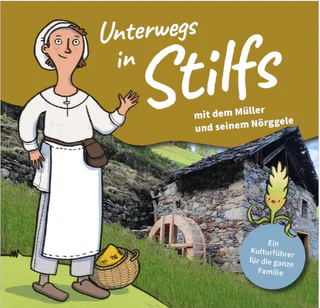
1/3
Niklaser Erlebnisweg
St. Nikolaus/S. Nicolò - Kaltern/Caldaro, Kaltern an der Weinstraße/Caldaro sulla Strada del Vino, Alto Adige Wine Road
Všude v prázdninových regionech Jižního Tyrolska jsou vyznačeny tematické procházky, speciální objevitelské trasy pro malé i velké. Například v jihotyrolském Unterlandu mohou návštěvníci na podzim zažít, jak se hrozny dostanou z vinné révy do sudu. V San Valentinu v Campo/Gummeru můžete prozkoumat vesmír a naši sluneční soustavu a v Terlanu/Terlanu pěstitelé chřestu předvedou, jak se na jaře získává ze země vzácný chřest. Celkem na návštěvníky Jižního Tyrolska čeká více než 150 značených a poučných tematických procházek.

1/3
St. Nikolaus/S. Nicolò - Kaltern/Caldaro, Kaltern an der Weinstraße/Caldaro sulla Strada del Vino, Alto Adige Wine Road

1/3
Gomagoi/Gomagoi, Stilfs/Stelvio, Vinschgau/Val Venosta

1/4
Vallesina/Versein, Mölten/Meltina, Bolzano/Bozen and environs

Acereto/Ahornach, Sand in Taufers/Campo Tures, Ahrntal/Valle Aurina

1/2
Stanghe/Stange, Ratschings/Racines, Sterzing/Vipiteno and environs

1/5
Velloi/Vellau, Algund/Lagundo, Meran/Merano and environs

S. Giovanni/St. Johann, Ahrntal/Valle Aurina, Ahrntal/Valle Aurina

1/5
Siusi/Seis, Kastelruth/Castelrotto, Dolomites Region Seiser Alm

1/11
Vilpiano/Vilpian, Terlan/Terlano, Bolzano/Bozen and environs

1/6
Montesole/Sonnenberg - Parcines/Partschins, Partschins/Parcines, Meran/Merano and environs

1/5
Tramin an der Weinstraße/Termeno sulla Strada del Vino, Alto Adige Wine Road

1/3
Tramin an der Weinstraße/Termeno sulla Strada del Vino, Alto Adige Wine Road

1/4
San Lugano/San Lugano, Truden/Trodena

1/2
S. Candido/Innichen, Innichen/San Candido, Dolomites Region 3 Zinnen

1/5
S. Giacomo/St. Jakob - Val di Vizze/Pfitsch, Pfitsch/Val di Vizze, Sterzing/Vipiteno and environs

1/3
Sluderno/Schluderns, Schluderns/Sluderno, Vinschgau/Val Venosta

1/4
Anterselva di Sopra/Antholz-Obertal, Rasen-Antholz/Rasun Anterselva, Dolomites Region Kronplatz/Plan de Corones

1/3
Glorenza/Glurns, Glurns/Glorenza, Vinschgau/Val Venosta

Villa Ottone/Uttenheim, Gais, Dolomites Region Kronplatz/Plan de Corones

1/36
Rablà/Rabland, Algund/Lagundo, Meran/Merano and environs

1/6
Laion paese/Lajen Dorf, Lajen/Laion

Monteponente/Pfeffersberg, Brixen/Bressanone, Brixen/Bressanone and environs

Pochi/Buchholz, Salorno/Salurn, Alto Adige Wine Road

1/3
Pietralba/Weissenstein, Deutschnofen/Nova Ponente, Dolomites Region Eggental

Freiberg/Montefranco, Kastelbell-Tschars/Castelbello-Ciardes, Vinschgau/Val Venosta

1/11
Cologna/Glaning, Jenesien/San Genesio Atesino, Bolzano/Bozen and environs

Proves/Proveis, Proveis/Proves, Meran/Merano and environs

Mazzes/Matzes, Sterzing/Vipiteno, Sterzing/Vipiteno and environs

1/14
Laghetti/Laag, Neumarkt/Egna, Alto Adige Wine Road

1/2
Gandelle-Franadega-Fienili/Kandellen-Frondeigen-Stadlern, Toblach/Dobbiaco, Dolomites Region 3 Zinnen